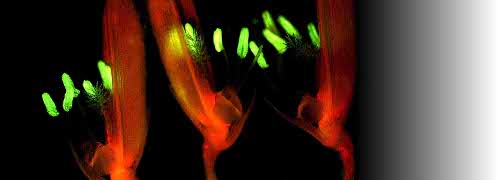During daytime, underwater photosynthesis not only provides sugars but it also produces O2 which results in significant aeration of belowground tissues. In light, the partial pressure gradient of O2 from shoot to root is huge (high O2 in the surrounding water, zero O2 in the anoxic soil) and can thus drive a substantial flux of O2 from shoot to root in well-developed aerenchyma as this pathway poses relatively little resistance to diffusion. In fact, O2 in the roots of rice displays a normal saturation curve relationship when plotted against light available to the shoots, a pattern also found in truly aquatic plants (see Case Study 4).
At night, the floodwater surrounding the shoot is the main source of O2 for internal aeration also of belowground tissues. The O2 “stored” in aerenchymous tissues cannot support night time respiration of belowground tissues as the O2 in the aerenchyma relatively quickly equilibrates with the environment (soil in the case of roots and water column in the case of shoot). However, with ample O2 in the floodwater a large partial pressure gradient exists for O2 movement from the floodwater into the leaves and further into the roots (both respiring and thus consuming O2). As a result, the relationship between floodwater O2 and root pO2 in darkness is often linear (see Case Study 4). The floodwater O2 threshold concentration required for O2 to enter and reach the root extremities is determined by the total resistance to molecular diffusion into (DBL, surface gas films, stomatal resistance, cuticular resistance) and through the plant body (tissue porosity, diffusion distance) plus loss of O2 along the route (respiration and any ROL). As with underwater photosynthesis, leaf gas films reduce the resistance to gas exchange between floodwater and leaves, so enhancing O2 entry at night-time. Plants with gas films have been shown to maintain better internal aeration as compared to plants with the gas films experimentally removed.
